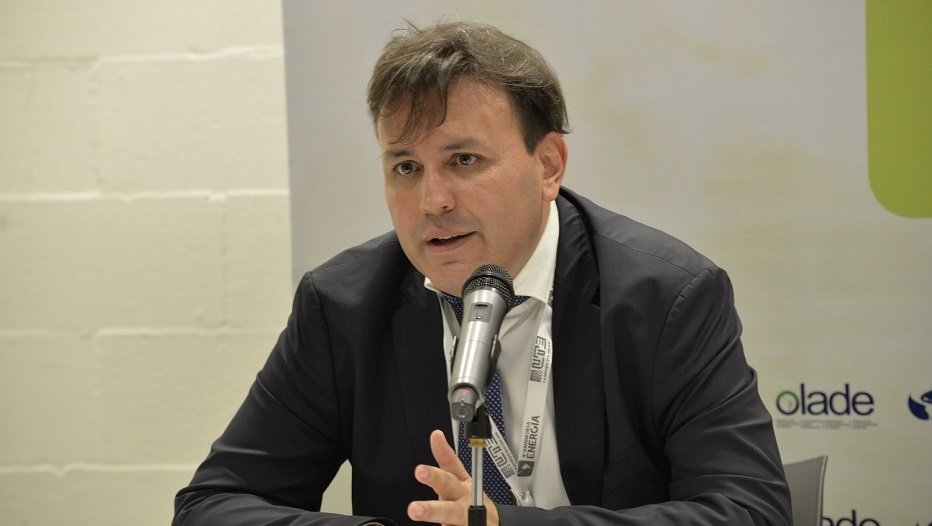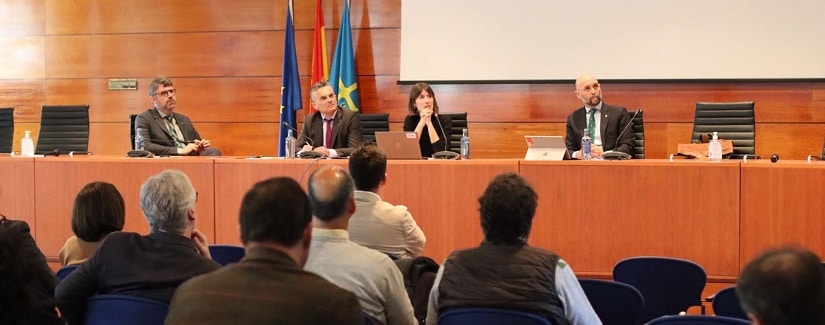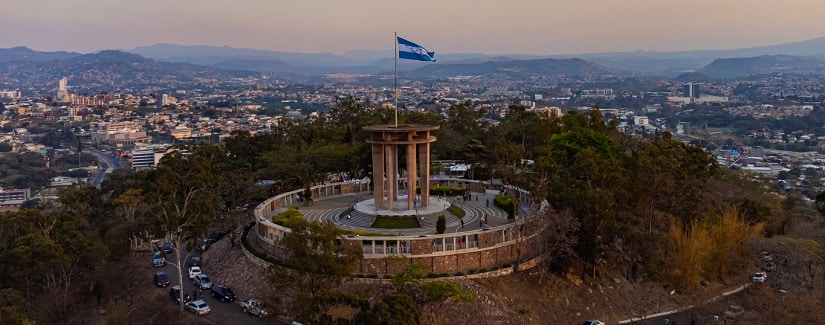The Latin American Energy Organization, a public intergovernmental institution, was established in November 1973 with the mission of contributing to the integration, sustainable development and energy security of the region. In addition to the historical challenge of closing gaps among the different member countries, in recent years we’ve seen a commitment to energy transition, which on a global level supports the renewable and sustainable viability of the sector. Alfonso Blanco, Executive Secretary of OLADE, talks about how the region is dealing with the challenge and how it is adapting to this new international scenario
The current Energy scenario in Latam, extracted from the interview with Alfonso Blanco:
- And Bolivia has a high need to establish future natural gas markets, with a scenario including the opening of sales to Brazil; and that also strongly modifies the development of exports and will also mean shared infrastructure projects.
- In Chile, there is a very ambitious plan to close coal-fired power plants and replace part of that generation with natural gas.
- Peru has a well-defined agenda in the incorporation of renewable energy and has cooperation initiatives with Chile.
- Argentina needs to see what role the development of renewable energy will have in the new government administration.
- In the case of Brazil, there is a need to use surplus natural gas, and therefore to expand the domestic market.
- There is significant uncertainty in Mexico’s evolution, with a large project portfolio that has developed at perhaps not as fast a pace as expected, presenting a great challenge
The energy transition in Latin America

1. We are in a moment of energy transition at a global level; how is it progressing in Latin America?
Latin America and the Caribbean comprise the greenest region on the planet. 25% of energy is renewable, and the reality is that much of that matrix is determined by two elements. First, the history of electricity generation in the region, with a very strong focus on the involvement of hydroelectric power. The role of biomass is also important, with a rate of use well above the global average. This element is particularly important because it is not only an asset at the residential level, but it is also present in biofuels and as a source for the industrial sector as a sustainable element.
Another aspect to take into account is that we have a very low carbon share compared to the rest of the world. Non-conventional renewable energy (solar, wind, geothermal, etc.) is gradually being incorporated into the region’s energy matrix, always led by those countries with an ecosystem conducive to developing this type of energy.
However, we have to take into account that despite the fact they are entering at a good pace, the demand is still higher. This means that if the region does not intensify aggregation it will gradually lose renewable capacity. There are some countries lagging behind in this progress, and the challenge for the sector is to close this development gap. We have three countries with practically 100% renewable capacity in their generation matrix: Paraguay, Costa Rica and Uruguay. We also have others with a high level of involvement, such as Chile, Brazil and Argentina.
2. What are OLADE’s objectives and mission in terms of participating in this progress?
OLADE is deeply committed to the development of long-term policies that incorporate energy transition commitments. We talk about transitions, in plural, because the way to achieve the most decarbonized economy possible is different depending on the country’s resource provisions, financing access schemes, its internal capacities and many other individual aspects. But there is a common and clear direction for decarbonization, set out in the Lima Declaration from the last meeting of ministers, a document reflecting the political position of the various regions on this matter.
To overcome the gap between regions that I mentioned earlier, the lessons learned in the processes initiated by the leading countries must also be incorporated into those that have yet to do so, and in this regard the role of OLADE is also important.
We have three countries with practically 100% renewable capacity in their generation matrix: Paraguay, Costa Rica and Uruguay. We also have others with a high level of involvement, such as Chile, Brazil and Argentina.
3. How would you define the current scenario you find yourself in?
In this sense, I would like to point out again that when we talk about a 25% share of renewable energy we are referring to the average for all of Latin America and the Caribbean, but the reality is completely different if we analyze it in parts. That is why at OLADE we deploy our work taking into account the situation of each region, and then focusing on the reality of each country. The outline of the situation in the Caribbean would not be the same if we took Trinidad and Tobago as a reference or the reality faced by Cuba, for example. This is why it is necessary to understand how the sector behaves in each subregion.
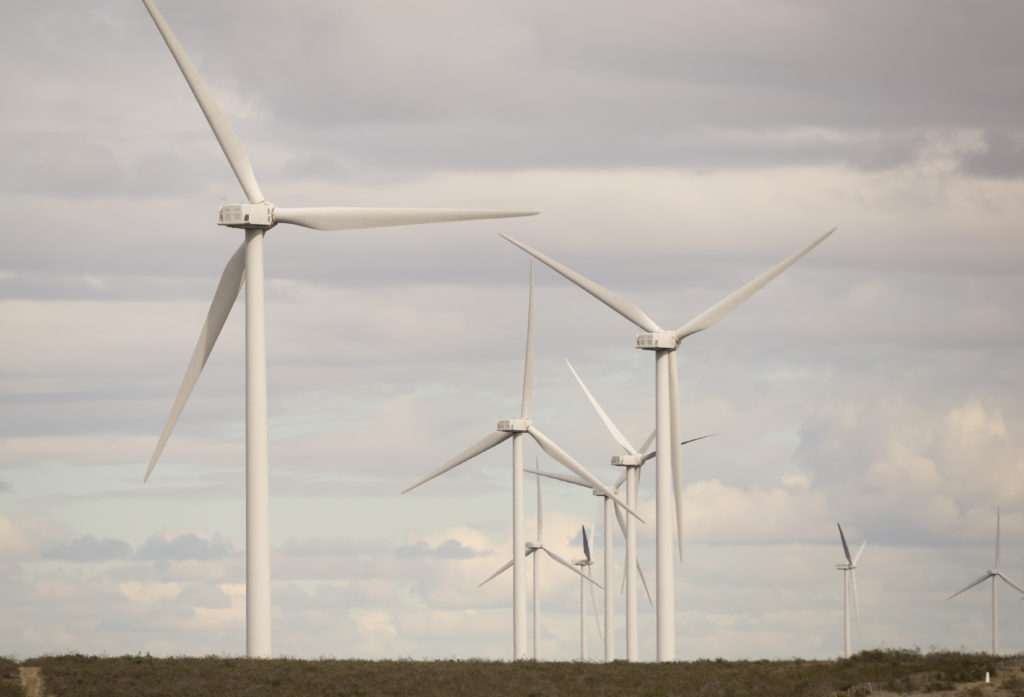
4. Could you tell us about the region’s growth potential? Are there any good practices from particular countries that you would like to highlight?
In terms of renewable energy, our region has enormous potential, much of which has not yet been exploited. For example, wind potential. In the south of Argentina, wind farms are currently opening with capacity factors far exceeding 50%. These are levels rarely seen in other regions of the world. We have great capacity at the resource level, and many of them are being incorporated under market mechanisms. This means that they do not incorporate strong subsidies or alter the price composition scheme, giving the sector likely long-term sustainability. Wind energy rivals a combined cycle of natural gas in system prices.
Any noteworthy cases in the region? Many countries have initiated in-depth and successful processes in the area of energy efficiency. Take the case of Uruguay, whose matrix was composed of 60% renewable energy in 2005, and ended 2018 with 98%. It all came about through renewable energy incorporation processes, starting with wind and solar, and electricity generation from biomass waste. This process resulted in very interesting business models with public and private involvement, and a very attractive financial structure. Another interesting case is Brazil, which has deployed a very effective wind development model; or Argentina, which went through a rather innovative generation process, as it tried to take on the country’s risks present at the time. Many countries have used these cases as a reference. In a way, all the processes have been feeding off previous experiences.
In the south of Argentina, wind farms are currently opening with capacity factors far exceeding 50%. These are levels rarely seen in other regions of the world. We have great capacity at the resource level, and many of them are being incorporated under market mechanisms.
5. With the specific objective of strengthening the sector based on these synergies, OLADE is supporting the systematization of energy information. How much progress have countries made in this regard, and how can the success of this plan contribute to the harmonization of different markets?
OLADE is the official energy information repository for all of Latin America. We have data available from 1970. My first action when taking on my role in 2017 was to take over these information systems. This turned into a domino effect, as opening access to the archives led to a process of improvement and modernization. We have lots of support in the generation of this information, which accompanies a work process going hand in hand with the International Energy Agency. The region must have reliable, transparent information, as it is the basis for effective decision-making, both at a political and private-sector level. We have specific optimization projects for this, and we are trying to cover the identified gaps, and improve the capture of institutionalized information; once we have it, we process it and place it on platforms that are viable for any user.
6. Which developments will facilitate technological innovation and what are the priority trends for major energy companies?
The energy sector is in the process of change, and there is a migration from that traditional model made up of fairly static companies with a highly vertical link to their consumers. Now, using new information technology, mobility is being incorporated. Companies are beginning to have much more dynamic relationships with their customers, and this generates information flows that completely change the historical conception of the sector and business models.
At this point, we must take into account the regulatory framework that can be projected in this new reality, which is a great challenge for the region. Regulatory frameworks were designed for a completely different sector than the one we are observing at present, and therefore in many countries the concession contracts for companies within the sector were designed in another era and with completely different realities. We are facing an increasingly dynamic sector, in which new information, mobility, storage and distributed generation techniques are on the table, and depend on active policies for their development.
7. If we could pinpoint the sector’s current key trends, what would they be?
I’ll go back to the dynamics that information technology, based on smart grids, is creating, which is favoring electric mobility. Another important element is the role of natural gas in the energy matrix; it will be highly important. We must bear in mind that Argentina is developing its unconventional reserves, as is Brazil.
8. Could you tell us specifically about solar energy’s use and potential in the region?
Solar is becoming one of the lowest cost energy types in those countries where the resource is available. Chile, Peru and Mexico have developed bidding processes and the price is far below supply alternatives. All of this is in terms of large-scale generation.
Another important element is distributed generation, generation directly connected to the distribution network which may be developed for self-consumption and to provide input to the network. In this segment, it will see lots of development in those countries that have already incorporated policies to promote this energy source. When the possibility of a resource and an ecosystem favorable to this type of initiative are combined, development is enhanced.
9. To which energy segments does the insurance industry bring the most value?
With the way projects are currently being developed, the role of large insurance companies is increasingly relevant, as countries are developing a suitable framework for this type of project with the participation of the private sector. The opportunities are focused on segments whose risks are more controlled, such as solar and wind energy. I believe that we still lack a certain sophistication; it is not the same to develop a wind project now as it was fifteen years ago, as risks are being detected much more. The opportunity lies in the elements of risk that are fundamentally associated with political, regulatory and exchange rate parameters. An interesting niche can be found in Argentina, where the projects’ risk shield was carried out with a fund developed with the World Bank. I think there is an interesting space there, since so far the coverage model has not resorted to private actors, and has gone on the side of multilateral agreements. The creation of specific coverage mechanisms would be very interesting for the sector.
Insurance companies are currently working very actively in the project development phase. From establishing a performance bond, to risks at the development level of infrastructure projects, coverage of risks in the supply chain, etc., these all play a highly active role and are a fundamental support for development. But there is still no involvement by insurance companies in the risks covering political, exchange and regulatory content, which I previously referred to.
9. ¿A qué segmentos energéticos aporta mayor valor la industria aseguradora?
Con el vigente desarrollo de proyectos, el rol de las grandes aseguradoras es cada vez más relevante, porque los países han logrado desarrollar un marco propicio para este tipo de proyectos con participación del sector privado. Las oportunidades se centran en segmentos cuyos riesgos están más controlados, como la energía solar y la eólica. Creo que aún nos falta cierta sofisticación, no es lo mismo desarrollar un proyecto eólico ahora que quince años atrás, porque los riesgos están mucho más detectados. La oportunidad está en los elementos de riesgo que están asociados fundamentalmente a parámetros políticos, regulatorios y de tipo cambiario. Un nicho interesante lo encontramos en Argentina, donde el blindaje a partir de riesgos de los proyectos se hizo con un fondo desarrollado con el Banco Mundial. Creo que ahí hay un espacio interesante, ya que el modelo de cobertura hasta el momento no ha recurrido a los actores privados, y ha ido de lado de las multilaterales. La creación de mecanismos específicos de cobertura sería muy interesante para el sector.
En la actualidad las aseguradoras están trabajando muy activamente en la fase de desarrollo de proyectos. Desde el establecimiento de garantía de cumplimiento de oferta, los riesgos a nivel de desarrollo de los proyectos de infraestructura, la cobertura de riesgos en la cadena de abastecimiento, etc. En eso sí tienen un rol muy activo y son un apoyo fundamental del desarrollo. Pero aún no hay una participación por parte de las aseguradoras en esa parte de los riesgos a los que me he referido, de contenido político, cambiario y regulatorio.
10. What is the role of the risk manager in the region’s large energy companies? How does their activity affect the stability of the sector?
The major companies in the sector have incorporated the role of risk manager, and I believe that there has been a strong professionalization in dealing with risk issues. The vast majority of the region’s most important companies have a manager in their structure, and it is fundamental because in some way, these results are being observed. By incorporating this type of risk analysis, companies are diversifying their portfolio much more. One can observe companies in the sector with subsidiaries at the generation level, but do not concentrate all their risks in a single technology, nor do they pool all their assets in a single market.
11. Should a risk management culture be encouraged in Latin American energy companies? What would be the steps to achieve this?
At this point we must once again remember the existence of considerable gaps. Large companies operating in the region have an internalized risk culture, which is highly integrated. It is not the same to speak of a large company, present in practically all the countries of the region and which manages a very diversified portfolio, as of companies under state control, which operate only in some countries and which in some way are shielded from a legal monopoly. The analysis of these two scenarios is completely different. The first group undoubtedly has a great handle on the insurance industry. For small operators the level is significantly lower. We could say that culture is closely linked to the level of the country’s energy sector.
12. What demands do energy companies make on high-risk insurance companies?
Although I don’t have direct and global data, I can tell you about some projects we are working on at OLADE to evaluate the climate change vulnerability of hydroelectric plants. There, for example, is a space identified in some way by the companies themselves that operate with this type of resource, and an unsatisfied demand. There should be some kind of climate-specific risk coverage, which is not yet being considered with any certainty, although it is beginning to be considered in the sector. We have been told that there is an interest in starting to explore this type of coverage, although to date we can say that it does not exist.
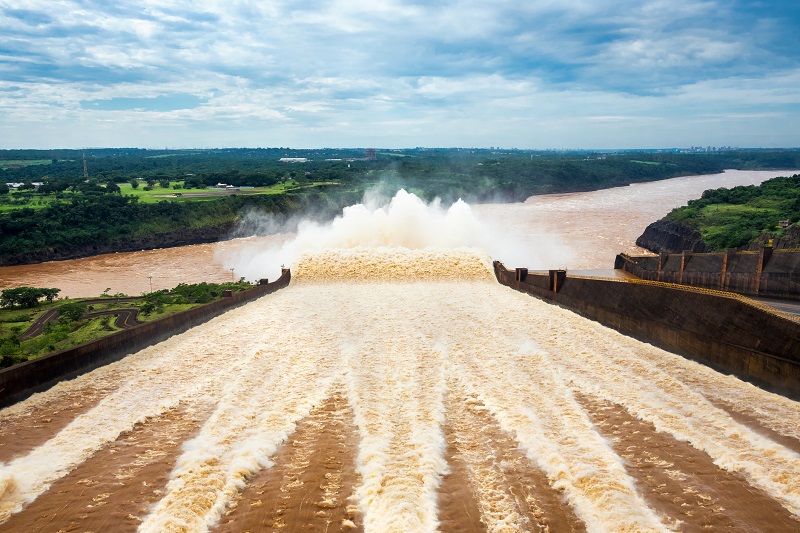
13. What priority projects will energy sector actors in the region resume in the near future?
In reality they are not being resumed, as there is an agenda being fulfilled that depends on the various countries. For example, in the case of Brazil, there is a need to use surplus natural gas, and therefore to expand the domestic market. Argentina needs to see what role the development of renewable energy will have in the new government administration. In Chile, there is a very ambitious plan to close coal-fired power plants and replace part of that generation with natural gas. Peru has a well-defined agenda in the incorporation of renewable energy, and has cooperation initiatives with Chile. And Bolivia has a high need to establish future natural gas markets, with a scenario including the opening of sales to Brazil; and that also strongly modifies the development of exports and will also mean shared infrastructure projects. There is significant uncertainty in Mexico’s evolution, with a large project portfolio that has developed at perhaps not as fast a pace as expected, presenting a great challenge. This, roughly speaking, would be the blueprint and the dynamics of each region.
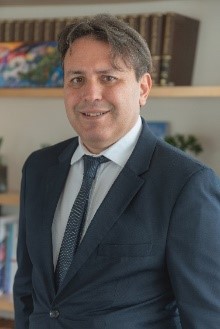
Alfonso Blanco Bonilla has held the position of Executive Secretary of the Latin American Energy Organization (OLADE) since the start of 2017, a position he was elected to by the Meeting of Energy Ministers of Latin America and the Caribbean for the period 2017-2020, and re-elected by the session held in Lima (Peru) in November 2019 for 2020-2022. He is a mechanical industrial engineer with a degree from the University of the Republic of Uruguay, holds a Master in Business Administration from ORT University and is a graduate in Economics from the University of the Republic of Uruguay.
He has extensive experience as an energy specialist in Latin America, with emphasis on regulatory issues, energy policy, project formulation and evaluation, business development and financing models. Prior to his current position at OLADE, he was a consultant for the World Bank, IDB, CAF and the United Nations, and held management positions within the Uruguayan government, leading various components of the country’s energy transformation, which began in 2005.

